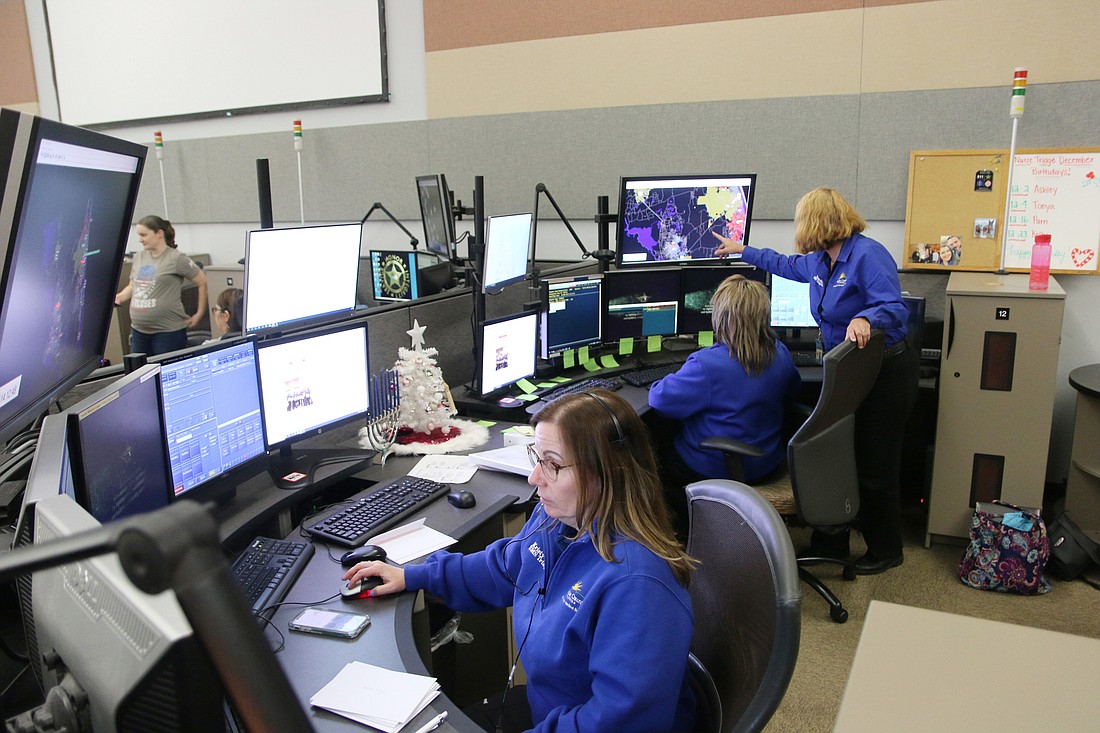- April 26, 2024
-
-
Loading

Loading

With the recent implementation of the nurse triage program inside the Volusia County Sheriff's Office Communication Center, the county is hopeful that its EMS service and ambulance availability will improve as the program tackles non-emergency calls.
The program began on Dec. 9, and is active from 7 a.m. to 7 p.m. Monday-Friday. A total of eight nurses — one full-time lead nurse and seven part-timers — make up the triage, all of whom went through 280 hours of training over 14 weeks with VCSO Communications Center staff to learn how to handle and dispatch 911 calls. The program was part of the recommendations the Volusia County Council approved back in February to improve EMS.
“Ultimately, our goal with this program is to integrate mobile healthcare to the community," Volusia County EMS Director Jason Brady said.
The program, which has cost $284,000, has the team of nurses handling calls involving flu symptoms, earaches, localized infections and others. Some of the recent calls handled by nurses include a resident complaining of pink eye and another who got a fish hook stuck on his hand.
“Before we went live, those calls would get an ambulance and even a firetruck dispatched to them with no pre-screening, or very little pre-screening," said Pam Cawood, lead EMS triage nurse.
So far, her team is averaging about 13 calls a day. The nurses ask a set of questions and gauge what care is needed, the severity of the injury or health concern, and from there they recommend where the patient should seek care. Options include an urgent care center, a follow-up with a primary care physician, or self-care instructions.
Two things had to fall into place for the program to come to fruition: support from the local hospitals, and a consolidated 911 dispatch. It has achieved both. The part-time nurses are from AdventHealth, Halifax Health and HCA Healthcare.
VCSO Communications Director Glenn said without a consolidated dispatch, a program like this would have been much harder to incorporate.
“With us, it was pretty much a no-brainer to do this," Lopez said. "It makes logical sense.”
Interim County Community Information Director Kevin Captain said an ambulance today is an "emergency department on wheels." If that unit is busy responding to a non-emergency call, that could hinder the ability to respond to a time-sensitive emergency.
“If you’re having a heart attack, you want to make sure that ambulance is available — not being used by a low acuity injury, taking a patient to the hospital that could otherwise have gone to an urgent care," Captain said.
However, if a resident truly wants an ambulance, they'll still get it. County Medical Director Peter Springer said they're not discounting anyone's injury. In a year, ambulances respond to between 60,000 to 80,000 calls. Out of that number, Springer said around 10,000 to 20,000 don't necessitate a hospital transfer.
“We want the public to know we’re not abandoning them," Springer said. "We’re actually just trying to find the appropriate places for them to be treated. It’s not always an emergency department.”
Volusia County is the first to implement a nurse triage program withs its 911 dispatch in the state, though not the first in the country. Cities like Las Vegas and Washington D.C. have programs in place.
Springer said this was a "work in progress," as the county will continue tweaking the program as they begin to gather data on high peak times and areas. In the future, the county will like to build on its paramedicine by introducing in-home patient care.
For now, Michael Vincent, EMS clinical services manager said they're looking to train paramedics for critical care. The first class will happen around March.
“There’s really no limit to what we can do," Brady said. "We’re really pioneering this to be a highly innovative EMS system.”